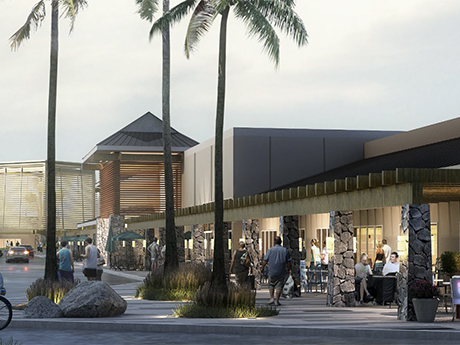— By Jon-Eric Greene, Colliers —
Hawaii has historically been home to many of the nation’s top grossing retail locations (as measured by gross sales), including one of the highest grossing regional malls in Ala Moana Center, and the world-famous retail street, Kalakaua Avenue in Waikiki. However, since COVID shutdowns, Hawaii retailers and shopping centers have struggled to recover. While the tourism and hotel markets have bounced back, an important visitor demographic — the international shopper — has yet to return.
Tourism is Hawaii’s No. 1 industry, with almost every dollar circulating through the economy tracing back to visitors. In 2019, Hawaii welcomed a record 10.4 million visitors. However, in 2020, arrivals plummeted to 2.7 million visitors due to the pandemic. The state experienced rebounded visitor numbers in 2021 and 2022 of 6.8 million and 9.2 million visitors respectively and expected to end 2023 with 9.3 million visitors. The visitor profile has changed dramatically, however, impacting many retailers and shopping centers.
In 2019, around 3 million visitors were international, with over 50 percent (1.58 million) coming from Japan. In 2022, only 900,000 of Hawaii’s 9.2 million visitors were international, including just 192,500 Japanese. So, while overall visitor counts to Hawaii recovered, international numbers — especially high-spending visitors from Japan, Korea, China and other Asian markets — remain over 80 percent below pre-pandemic levels, with Japan still down almost 90 percent. For global brands catering to this market in Waikiki and at Ala Moana Center, it has been challenging.
Experts don’t expect Japanese visitors to fully rebound until 2025, largely due to the strong U.S. dollar making Hawaii vacations much more expensive — both from the higher cost of travel to Hawaii and higher prices while shopping in the U.S. The strongest years for Japanese spending in Hawaii correlated directly with exchange rates, and Japanese travel peaked when the yen traded below 100 JPY/USD (as recently as 2012). In the past few years, the yen has weakened against the dollar and is now at around 130 to 150 JPY/USD. The Japanese visitor is unlikely to return in significant numbers or be a meaningful customer for Hawaii retailers until exchange rates improve to below 115 JPY/USD.
There are three distinct Hawaii retail customers: the local resident, the westbound mainland U.S. visitor and the eastbound international visitor from Asia.
The local resident is primarily a value-driven consumer balancing Hawaii’s high housing and food costs by patronizing discount chains. National retailers such as Costco, Sam’s Club, Walmart, Target, Ross Dress For Less, TJ Maxx and others operate their highest sales volume store locations in Hawaii. Amazon is increasing its presence, having invested over $450 million in Hawaii since 2020, and has an agreement with Hawaiian Airlines to operate 10 Airbus A330 cargo planes to serve the market.
Prior to the pandemic, over 90 percent of eastbound visitors concentrated their stay on Oahu. Luxury and specialty brands focused intensely on this demographic, with multiple store locations in Waikiki on the world famous Kalakaua Avenue and in nearby Ala Moana Center. But with far fewer Asian visitors since the pandemic, these properties have been impacted. Property owners and leasing teams have had to adjust their merchandising and marketing strategies to appeal to a different customer.
When pandemic travel restrictions finally lifted in late 2020, mainland U.S. visitors returned to Hawaii in droves. Many first-time Hawaii visitors came from the East Coast, since travel to their typical vacation destinations in Europe and the Caribbean was still restricted. This pushed Neighbor Island retail markets to recover faster than Oahu. In fact, Maui led Hawaii’s resort resurgence, with the strongest retail and hospitality performance in the state.
Tragically, in early August, devastating fires swept through West Maui and the historic town of Lahaina, bringing the most horrific event the Islands has ever endured. There are no words to appropriately describe the shocking destruction and tragic loss from the fire. So many lives, homes, neighborhoods, schools, businesses and livelihoods have been and continue to be impacted. Lahaina was the heart of West Maui’s community and a key part of Hawaii’s history, and Front Street was considered one of the world’s strongest retail streets. The historic district of Lahaina and its collection of buildings, businesses, history and culture along Front Street are gone forever.
The Aloha Spirit remains strong in Hawaii. Its residents, communities and businesses are working together to rebuild the community. Hawaii’s market will continue to meet the challenges and opportunities of an ever-changing visitor and retail environment.


